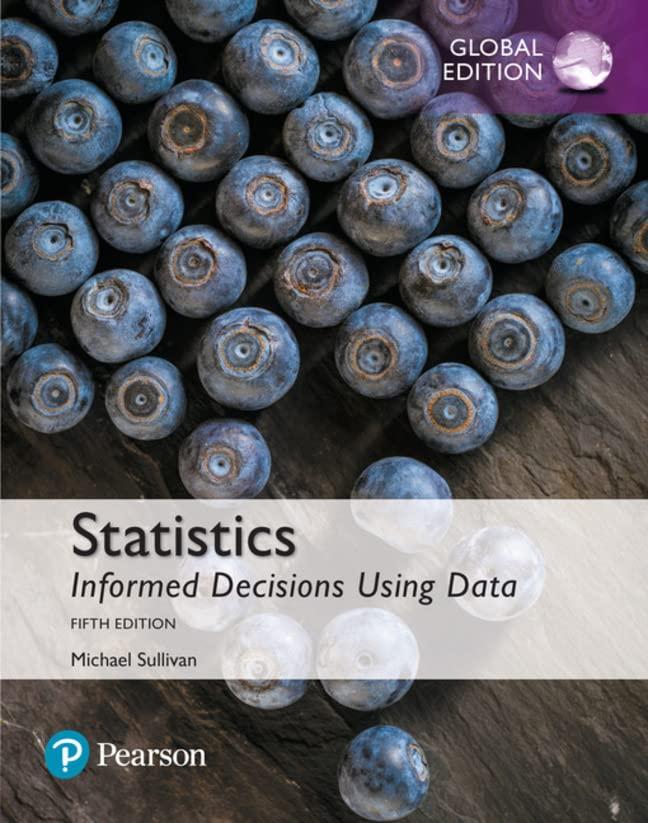In clinical trials of Nasonex, 3774 adult and adolescent allergy patients (patients 12 years and older) were
Question:
In clinical trials of Nasonex, 3774 adult and adolescent allergy patients (patients 12 years and older) were randomly divided into two groups. The patients in group 1 (experimental group) received \(200 \mu \mathrm{g}\) of Nasonex, while the patients in group 2 (control group) received a placebo. Of the 2103 patients in the experimental group, 547 reported headaches as a side effect. Of the 1671 patients in the control group, 368 reported headaches as a side effect. Is there significant evidence to conclude that the proportion of Nasonex users who experienced headaches as a side effect is greater than the proportion in the control group at the \(\alpha=0.05\) level of significance?
Approach Note that this is a completely randomized design. The response variable is whether or not the patient reports a headache. The treatments are the drugs: Nasonex or a placebo. The subjects are the 3774 adult and adolescent allergy patients.
We are attempting to determine if the evidence suggests that the proportion of patients who report a headache and are receiving Nasonex is greater than the proportion of patients who report a headache and are receiving a placebo. We will call the group that received Nasonex sample 1 and the group that received a placebo sample 2.
Verify the requirements to perform the hypothesis test. That is, the sample must be a simple random sample or the result of a randomized experiment and \(n_{1} \hat{p}_{1}\left(1-\hat{p}_{1}\right) \geq 10\) and \(n_{2} \hat{p}_{2}\left(1-\hat{p}_{2}\right) \geq 10\). In addition, the sample size cannot be more than \(5 \%\) of the population size. Then follow the preceding Steps 1 through 5.
Step by Step Answer:

Statistics Informed Decisions Using Data
ISBN: 9781292157115
5th Global Edition
Authors: Michael Sullivan





